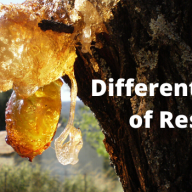Curious About What’s in Your Lipstick?
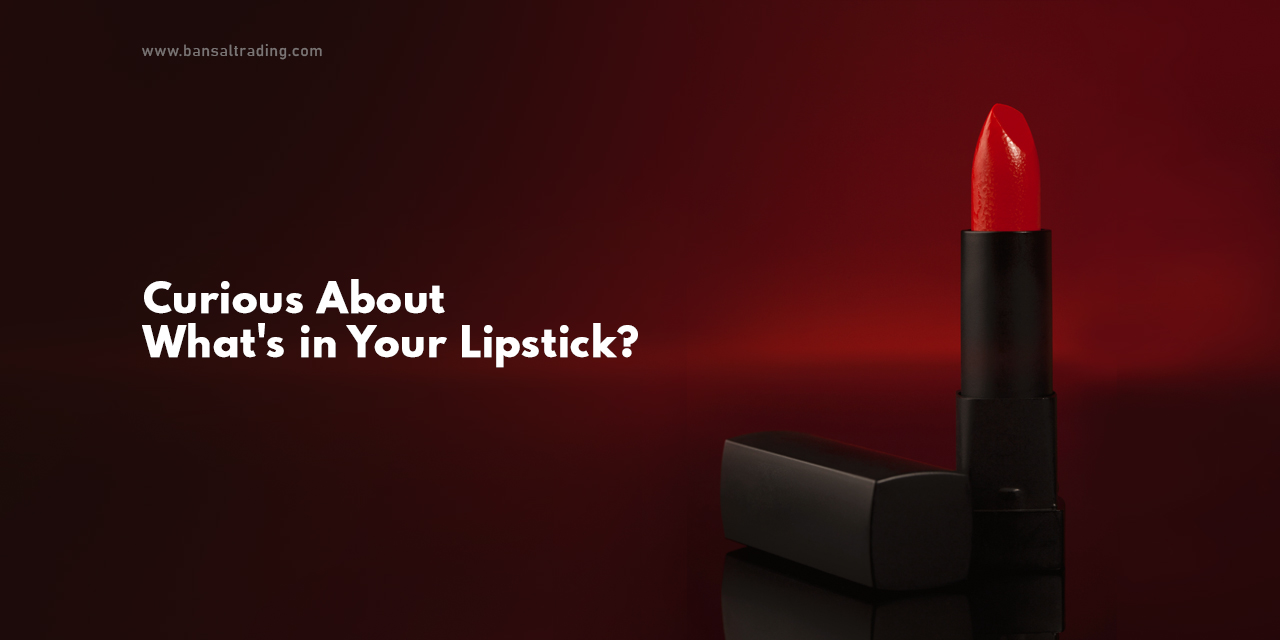
Ingredients of Lipstick; Beauty cosmetics have evolved since the beginning of ancient civilizations— lip color was used centuries ago among the Greeks, Persians, Egyptians, and so on. For many years, Queen Elizabeth I and her court ladies used red mercuric sulfide to color their lips red. Also, rouge was an ingredient used to color cheeks and lips, which was a trendsetter of ancient times. In the twentieth century, cosmetic products and lipsticks gained wide societal acceptance around the globe. Lipstick has been popular in numerous women’s trends, which is often a tag of sexuality. Chemical Suppliers In Delhi distribute the best raw materials for the manufacturing of lipsticks with cool undertones, neutral undertones, and warm undertones, which also match right with their skin tone. In this blog, let’s take a deep dive into the composition of lipstick and everything about how lipstick is made.
History of Lipsticks
The Indus Valley and Sumerian people are believed to be the first-ever to invent and wear lipstick, reportedly before 5000 years. They crushed gemstones and decorated the faces, primarily around their eyes and lips. While Egyptians, especially Cleopatra crushed carmine bugs to get red color for their lips. The ancient Indus valley civilization saw women using rectangular ochre pieces for lipstick. Also, later beeswax and red lac coloring were used for lops. The ancient Egyptians used lipstick to prove their social status other than gender. They used the red dye obtained from Fucus Algin, bromine mannite, and iodine– however this dye ended up causing critical illness to the people. Fish scales were also used to extract the pearlescent pigments and produce shimmering lipsticks. The Chinese used beeswax-made lipsticks 1000 years ago, to safeguard their delicate lip skins. With the coming of the Tang Dynasty, they included scented oils to it, giving the mouth a refreshing factor. Lip coloring slowly gained popularity with the blend of plant red stains and beeswax pellets for brighter shades. Later, slowly people started making lipstick in their homes. The first commercial lipstick manufacturing happened in 1884, in Paris. The perfumers produced it using castor oil, deer tallow, and beeswax and covered the lipstick in silk paper.
What are the characteristics of good lipstick?
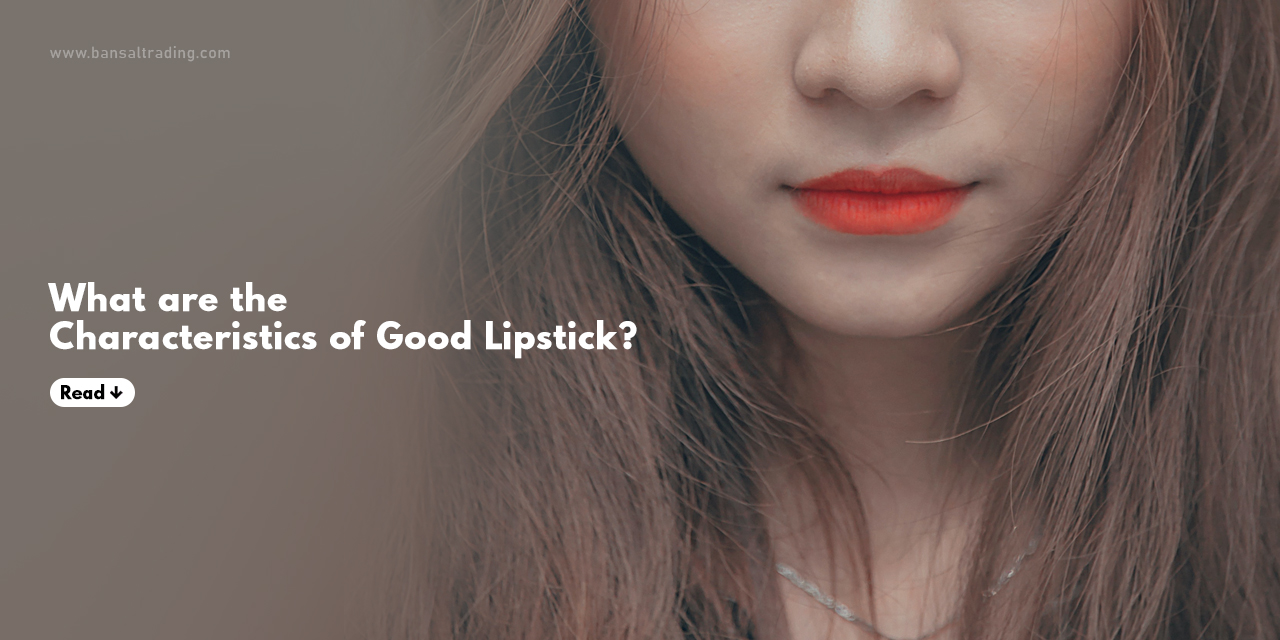
A lipstick is said to be great with the following characteristics:
- Remains solid while under room temperature
- Hard and unbreakable with light force on it
- Soft enough to make a layer on the skin of lips as you apply
- Evenly-toned layer
- The layer stays even for at least a while
Note: When the melting point is high, the amount of wax is more, and the final lipstick will be harder. The general rule is that the mixture and components share similar properties, with large proportions. This means the mixture will exhibit more properties of the substance. For instance, a cake tastes highly buttery with more butter in it.
Also Read: Natural Colorants For Cosmetics: What You Need To Know
Composition of a Lipstick
Glycerine is also a vital component for lipstick owing to its anti-allergic and moisturizing properties. It is supplied to lipstick manufacturers by glycerine distributors in Delhi.
Lipsticks are made usually using moisturizing oils and wax to give the desired shape and colors, this could be natural or artificial. The general ingredients of lipstick include wax, oil, and pigment. Pigment refers to the color, and waxes offer spreadable texture with shape. Oils such as castor oil, mineral oils, lanolin, cocoa powder, jojoba, petrolatum, etc, can be used to add moisture. Pigments or colored powders are dispersed in the lipstick to give it ultimate color and opacity. One of the significant aspects of lipsticks to consider is that it is near the mouth. You might accidentally eat it, or unknowingly chew it with the food you eat. Hence certain pigments are restricted in the manufacturing of lip products, or they are confined only to a limited concentration. The pigment is oil-dispersed and usually doesn’t dissolve, however, it is based on small solid bits in the lipstick. This means they look like a continuous single color— like you add the protein powder to the well-blended shake. Great lipstick color is a result of well-grounded pigments and an evenly spread lipstick base.
Glycerine is also a vital component for lipstick owing to its anti-allergic and moisturizing properties. It is supplied to lipstick manufacturers by glycerine distributors in Delhi.
Also Read: Hyaluronic Acid: The Ultimate Moisturizing Ingredient
What are the ingredients of lipstick?
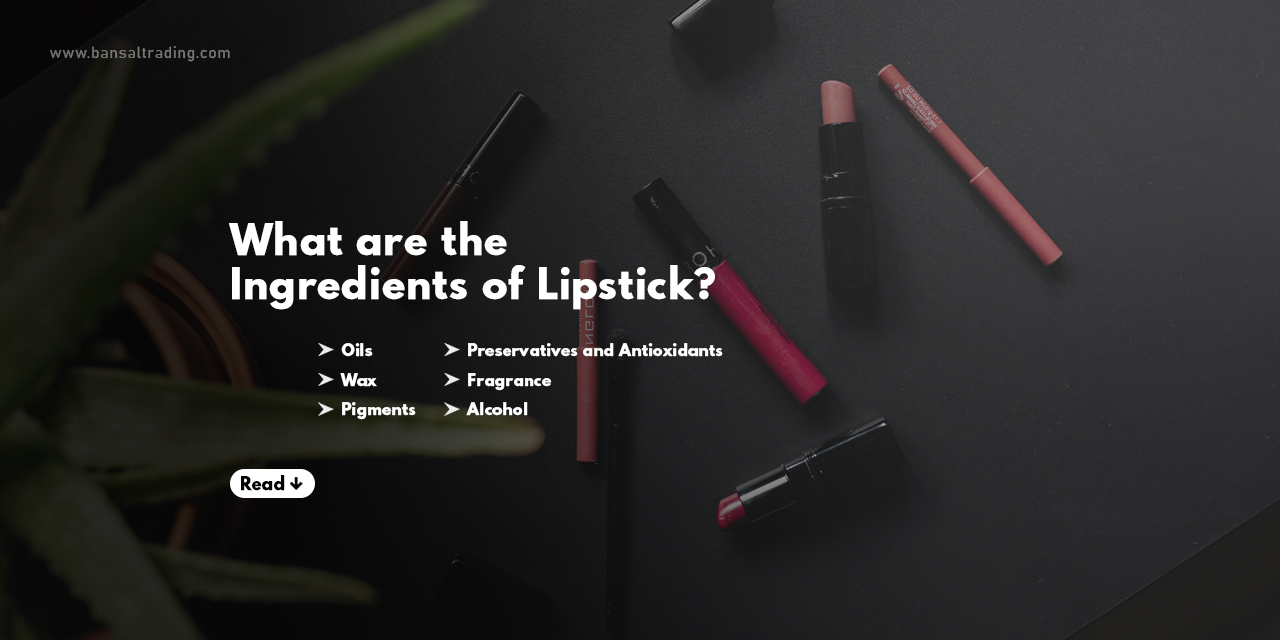
As mentioned, the lipstick ingredients are wax, oil, and coloring agents (pigments). Let’s discuss the ingredient list in detail:
Oils
60% of the total lipstick weight is oils. Being the major ingredient in lipsticks, the oil needs to be added in the mentioned quantities to keep the lipsticks favorable for use. The oils change the intensity of the lipstick composition. The higher the oil, the sheerer will be the application, while lesser oil creates a richer pigment. Oil such as castor oil, mineral oil, vegetable, and lanolin are highly in demand and are then added to the wax. They moisturize, are smoother, and dissolve the coloring agents and solvents into your lipstick. Other than the above-mentioned oils, grapeseed oil, palm oil, sweet almond oil, olive oil, IPP, triglycerides, IPM, Cyclomethicone, and dimethicone are also used instead.
Wax
Wax is an ingredient that imparts shape to the lipstick and produces gloss, effectiveness, and grip for the lipstick. The common natural waxes used in the production of lipstick include Candelilla wax, tallow wax, Carnauba wax, and hydrocarbons like Ozokerite, Ceresin, hard paraffin wax, etc. The core ingredient of each lipstick is wax which contributes to the base of lipstick to enable its easy application. The major type of wax called Carnauba wax is derived from the Brazilian wax tree leaves, which have high demand and are expensive when compared to the other two types.
Pigments
Lipsticks come in a wide variety of colors, and the pigments are the substances that contribute to every color shade you can imagine. Women can prefer even subtle color tones, which makes manufacturers go for producing lipsticks in the preferred color shades. Colorants are useful to provide the lipstick’s desired color, and they are classified into 2: organic, and inorganic. The inorganic colorants could be ZnO, TiO2, pearl powder, etc. These are insoluble, hence adequate preparation processes are needed to evenly disperse the color. Organic color shades like Lactoflavin, beetroot powder, and Anthocyanins are soluble and dispersed smoothly but cause the smearing of colors. Hence, these are blended to create smudge-proof and evenly-toned lipsticks.
Apart from the above skincare ingredients, the additional ingredients below contribute to the making of lipsticks:
Preservatives and Antioxidants
Lipsticks are not products you can use for a very long time. The ingredients of lipstick can degrade with time, hence the adequate mixture of antioxidants and preservatives is crucial to extend the shelf life of the lipsticks you use. One major tactic adopted for prolonged life is refrigeration. Refrigeration helps to give lipsticks a long life and remain intact. With preservatives, you can maintain longevity and avoid oxidation over time. The average lipstick/lip gloss can be used for only a year, however, with antioxidants like Lecithin and BHT, you can extend its life.
Fragrance
Artificial fragrances play an important role in masking the scent of chemicals in colorants, waxes, and oils found in lipsticks. Since the oils, colorants, and waxes included in the Ingredients of lipstick can emit their smell, adding a specific amount of fragrance to it can help you to keep the lipstick smell pleasant. If people have dry lips or cracked lips, they must prevent using scented Ingredients of Lipstick, because it can cause an allergic reactions in the skin.
Alcohol
Alcohol or glycol is often used as a solvent for both oils and wax in lipsticks.
Also Read: Vegetable Oils for Cosmetics and Pharma: Nature’s Nourishing Elixir
What are the ingredients you should avoid/limit?
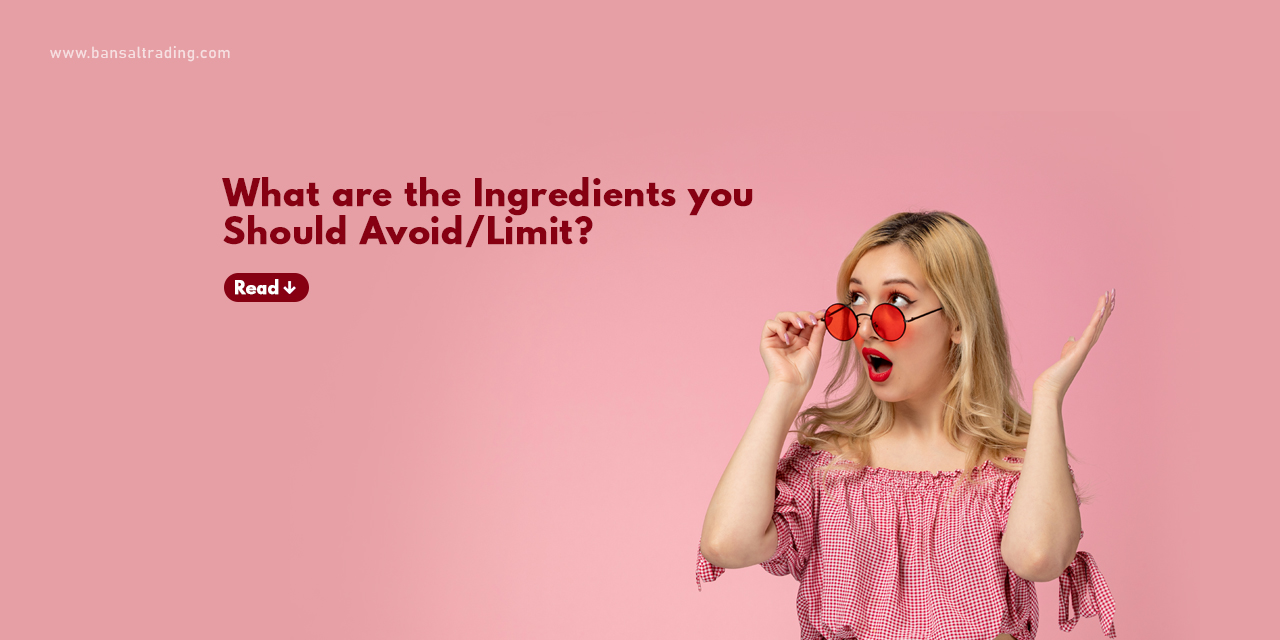
Now that you know what are the key ingredients every lipstick should have. What about the harmful ingredients you must not use/use in limited concentrations in the manufacturing of lipsticks? Let’s take a glance at these substances:
Lead: Lead content in lipstick is fine but recommended usage is 20 mg. The manufacturing process of lipsticks cannot completely remove the impurities in fractional volume, including lead. Hence a small quantity of lead in lipstick is not something to worry about. Lead is tagged as one of the ingredients of lipstick brands. Since they could be harmful once ingested, the regulatory bodies have placed a limit on the use of these elements under efficacy standards.
Harmful pigments/colorants: Certain pigments can be taken from the coal tar. This is a harmful mixture that causes headaches, skin allergies, nausea, and attention deficit once ingested. Another pigment known as Carmine in beauty products can also cause skin irritations among people.
Based on the origin and combinations of ingredients, the lipsticks we use will contain various colors and smoothness. Being beautiful while being safe is essential, hence taking note of harmful ingredients is important.
Also Read: How to Select the Ideal Chemical Supplier in India
How to Make Lipstick?
How to Make Lipstick: You would now wonder how lipstick is made and what processes the manufacturing of lipsticks undergoes. Lipstick manufacturing involves the following steps:
- Pigment Milling: In this process, you choose the pigment desired, or the pigment combination you need to mix with care. Then this is combined with oils and passed to a three-roll mill that grinds the particles (up to 20 microns in size). The usual oil-to-pigment ratio is 2:1.
- Mixing & Grinding: The blend of the pigment phase to the base wax is made with the fine mixing of liquids in the kettle, which treats them with steam and a propeller agitator. Once they are successfully mixed, the liquid is further put into the mill and grind into 20-micron-size particles.
- Molding: To eliminate the undesired products or cold marks, molding is performed under a particular temperature. Lipstick liquid is heated to over 800C. This is then passed to the molds with vertical splits and maintained at 350C. To avoid air bubble formation in the molds, the product manufacturers can go for slightly tilted molding systems. They can also use the vacuuming process to extract air forcefully.
- Flaming: The final lipstick Ingredients are further cooled down. This undergoes extraction from molds and passes for flaming. Flaming involves passing sticks near flame torches which can melt tiny glossy layers around the Ingredients of lipstick. The process will make sure that the lipstick has the best visual appearance and remains protected against the influences of air, moisture, or heat.
- Packaging and labeling: The process is performed in line with the manufacturer’s requirements and the final product is well-packed to be ready for distribution.
Also Read: All About Retinol Benefits: The Anti-Aging Ingredient
Uses of Niacinamide and stearic acid in the beauty industry
Niacinamide, a versatile skincare ingredient distributed by Niacinamide Distributors In India, holds a prominent place in the beauty industry. Renowned for its skin-loving properties, it addresses a spectrum of concerns – from regulating sebum production and minimizing pores to brightening skin tone and improving overall texture.
Carbomer, sourced from reliable Carbomer Suppliers In India, is a game-changer in product formulation. Its ability to thicken and stabilize solutions makes it a key ingredient in various skincare products, ensuring a smooth and consistent application that consumers adore.
Stearic Acid, supplied by reputable Stearic Acid Suppliers In Delhi, offers multi-faceted benefits in the beauty realm. With its emulsifying and binding qualities, it contributes to the creation of luxurious creams, lotions, and balms. This ingredient’s presence ensures not only the product’s stability but also a delightful sensory experience for users.
Moreover, in the pursuit of radiant and even skin, Skin Lightening Agent Distributors In Delhi make available potent formulations enriched with these ingredients. Niacinamide aids in reducing hyperpigmentation, carbomer optimizes texture, and stearic acid assists in crafting products that not only feel exquisite but also contribute to the journey towards healthy and glowing skin.
Final Thoughts
Ever wondered about the Cosmetic wholesale market in Delhi stuffed with plenty of personal care products and every cosmetic shop selling numerous lipstick products? Cosmetic items like lipsticks need to be produced with the right amount of raw materials. Sourcing the raw materials and manufacturing processes for products related to personal care, skincare, and other cosmetics need great attention since they deal with skin. While the ingredients of lipstick can contain oils, waxes, preservatives, pigments, and alcohol, the chemical structures, volume, and concentrations of adding these substances to your lipsticks should be well-known to you. Being one of the major Chemical Trading Companies In India, Bansal Trading can give you the best Ingredients of lipstick based on the desired concentrations and the requirements of the industry.
BTC_WEB_ADMIN




